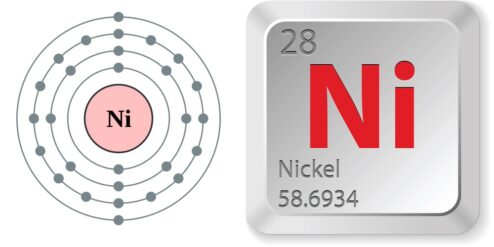Green tea, a popular beverage consumed worldwide, is known for its numerous health benefits. It is rich in antioxidants, aids in weight loss, and can help improve brain function. However, there have been concerns about the nickel content in green tea, raising questions about its safety. This article will delve into the composition of green tea, its nickel content, and the health implications of high nickel in green tea.
Understanding the Composition of Green Tea
Green tea is derived from the leaves of the Camellia sinensis plant. It undergoes minimal oxidation during processing, which helps retain its color and nutritional properties. The primary constituents of green tea include polyphenols, flavonoids, and catechins, which are responsible for its antioxidant properties. It also contains vitamins, minerals, and trace amounts of metals, including nickel. However, the presence of nickel is not unique to green tea; it is a naturally occurring element found in the earth’s crust and is present in varying amounts in all plant and animal foods.
Nickel Content in Green Tea: A Closer Look
The nickel content in green tea can vary depending on several factors. These include the soil where the tea plant is grown, the water used for irrigation, and the processing methods. Some studies have shown that green tea can contain up to 0.47 mg of nickel per 100 grams. However, it’s important to note that these are trace amounts and are typically not harmful to most individuals.
The Relationship Between Green Tea and Nickel
Nickel is a trace mineral that is essential for the body in small amounts. It plays a role in hormone, lipid, and cell membrane metabolism. However, excessive intake can lead to nickel toxicity, which can cause adverse health effects. Green tea, being a plant-based product, naturally absorbs nickel from the soil. However, the nickel content in green tea is generally low and unlikely to contribute significantly to overall dietary nickel intake.
Health Implications of High Nickel in Green Tea
Nickel toxicity from green tea is rare but can occur in individuals with nickel allergy or those who consume large quantities of tea. Symptoms can include skin rashes, nausea, vomiting, diarrhea, and in severe cases, heart and kidney problems. However, it’s important to note that these symptoms are usually associated with excessive nickel intake from all dietary sources, not just green tea.
How to Limit Nickel Intake from Green Tea
To limit nickel intake from green tea, consider the following tips. First, consume green tea in moderation. Second, opt for high-quality tea from reputable brands, as they usually have lower nickel content. Third, if you have a known nickel allergy, you may want to limit your green tea consumption or choose nickel-free alternatives.
Expert Recommendations: Green Tea and Nickel Safety
Experts agree that the health benefits of green tea far outweigh the potential risks associated with its nickel content. The World Health Organization (WHO) states that the average daily intake of nickel for adults should not exceed 0.6 mg. Considering the nickel content in green tea, one would have to consume an unrealistic amount of tea to reach this limit. Therefore, for most individuals, consuming green tea is safe and beneficial.
Green tea is a healthy beverage with numerous health benefits. While it does contain trace amounts of nickel, the levels are generally low and unlikely to cause harm to most individuals. However, those with nickel allergies or who consume large quantities of tea should be mindful of their intake. As with any food or beverage, moderation is key.
Per approfondire:
- "Nickel in Tea": An in-depth research article on the nickel content in different types of tea.
- "Green Tea: Health Benefits, Side Effects, and Research": An article that provides comprehensive information on the health benefits and potential side effects of green tea.
- "Nickel Allergy": A detailed article by Mayo Clinic on nickel allergy, its symptoms, causes, and treatment.
- "Dietary Nickel as a Cause of Systemic Contact Dermatitis": A research paper exploring the link between dietary nickel and systemic contact dermatitis.
- "Nickel in Drinking-water": A World Health Organization (WHO) document providing guidelines on the safe levels of nickel in drinking water.


